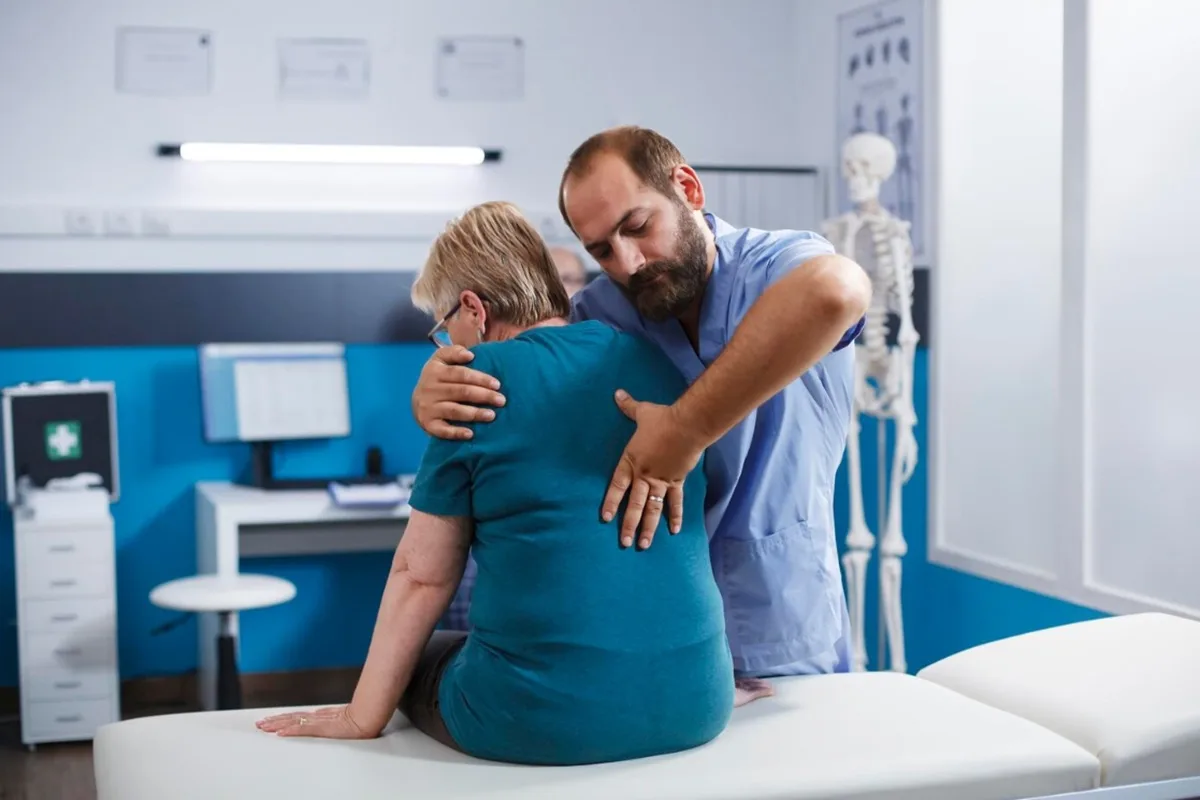Back pain is one of the most common medical conditions in the world, and for some individuals, it may become a chronic, life-altering condition. It may have serious consequences, including decreased mobility, decreased productivity, and even an impact on mental health, regardless of the cause—injury, age-related degeneration, or repeated strain. Even while conventional therapies like medicine, physical therapy, and surgery have long been the norm, they often prioritize symptom management above real restoration. Regenerative medicine has changed the discourse in recent years, and stem cells used to help back pain have become a potent substitute that seeks to rebuild spine health from the inside out.
The Function Of Stem Cells In Spinal Care
When injected into a damaged or deteriorated spinal region, stem cells function in two main ways. First, they may directly change into the necessary cell types to strengthen ligaments, mend cartilage in facet joints, or reconstruct damaged discs. Second, they produce signaling molecules and growth factors that promote inflammation reduction and healing in the surrounding cells.
The procedure usually involves obtaining stem cells from the patient’s own body, often from adipose tissue or bone marrow. Following collection, the cells undergo processing to boost their concentration before being carefully injected into the afflicted region, guided by images. This tailored distribution ensures the greatest chance of mending where it is most needed.
Benefits Compared To Traditional Treatments
Surgery, steroid injections, or medications are often used to address back pain. Although they may provide short-term comfort, painkillers may cause negative effects or reliance. Although steroid injections may reduce inflammation, the underlying issue is not addressed, and their benefits wear off over time. Although there are hazards, long recovery times, and no assurance of total success, surgery may be beneficial.
The main benefit of stem cell treatment is its capacity for regeneration. Concentrating on the damaged or worn tissue that is the source of the issue provides the chance for long-term recovery as opposed to short-term symptom relief. This may imply that some people will not have surgery at all. Others could combine it with physical therapy to lessen discomfort and restore strength and mobility.
Situations That Could Help
Many patients have sought stem cell treatment for spine disorders, including facet joint arthritis, degenerative disc disease, ruptured discs, and chronic ligament or muscle injuries; however, research is still underway. In these situations, the ability of stem cells to regenerate may aid in improving spine alignment, lowering nerve pressure, and restoring structural integrity.
Crucially, the treatment’s anti-inflammatory properties also contribute. Stem cells may improve the environment for tissue healing by reducing chronic inflammation, which is a significant cause of persistent discomfort.
Experience And Recovery Of Patients
The fact that stem cell treatment is less invasive is among its most alluring features. Since the surgery is usually performed as an outpatient procedure, patients may go home the same day. As the cells heal and renew tissue, most patients see a progressive improvement over weeks or months, but recovery varies.
In addition to experiencing less pain, many patients also report feeling more mobile and able to return to activities they had previously stopped. This improvement may be life-changing for those who have had back pain for years.
Spinal Regeneration’s Future
Regenerative medicine is developing rapidly. To further increase the possibility of healing, researchers are looking at methods to supplement stem cell therapy with complementary therapies like platelet-rich plasma (PRP). Research is also being done on developing techniques to guarantee stem cells last longer and function better after injection and creating lab-grown tissues for spinal repair.
Stem cell therapy is expected to become a common component of back care as clinical evidence increases. This will make it accessible to more patients and allow it to be employed earlier in treatment regimens to prevent diseases from getting worse.
Conclusion
Patients’ and physicians’ perceptions of spinal health are changing as a result of the use of stem cells to treat back pain. It provides a route to long-lasting alleviation and an increase in mobility by emphasizing regeneration as opposed to just managing symptoms. Although it may not be able to completely replace all conventional treatments, it is a significant step in the direction of a time when back pain won’t have to restrict a person for the rest of their life. One of the most useful techniques in contemporary back treatment may be spine regeneration via stem cell therapy as research advances and accessibility increases.



